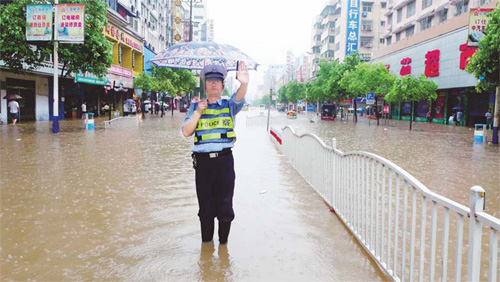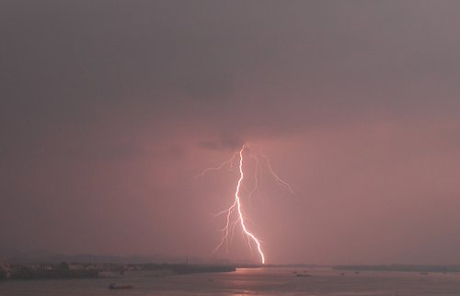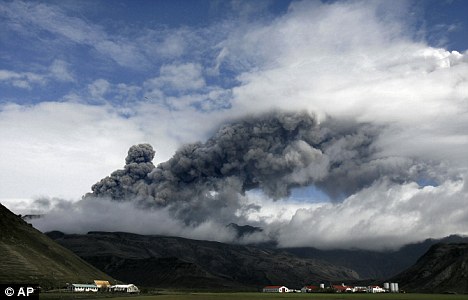
© NASA/Goddard/MODIS Rapid Response Team NASA's Terra satellite flew over the Eyjafjallajokull Volcano, Iceland, on May 6 at 11:55 UTC (7:55 a.m. EDT). The Moderate Resolution Imaging Spectroradiometer instrument known as MODIS that flies onboard Terra, captured a visible image of the ash plume. The plume was blowing east then southeast over the Northern Atlantic. The satellite image shows that the plume is at a lower level in the atmosphere than the clouds that lie to its east, as the brown plume appears to slide underneath the white clouds.
Dublin - Iceland's volcano has produced a 1,000-mile-wide (1,600 kilometer-wide) ash cloud off the west coast of Ireland that will force western Irish airports to shut down again Friday, the Irish Aviation Authority announced.
The authority said shifting winds, currently coming from the north, had bundled recent days' erupted ash into a massive cloud that is growing both in width and height by the hour.
Eurocontrol, which determines the air routes that airliners can use in and around Europe, says the ash accumulation is posing a new navigational obstacle - because the cloud is gradually climbing to 35,000 feet (10.5 kilometers) and into the typical cruising altitude of trans-Atlantic aircraft. Until recent days, the ash had remained below 20,000 feet (6 kilometers).
The Irish Aviation Authority said the engine-wrecking ash would skirt Ireland's western shores Friday, forcing a half-dozen airports to ground flights for much of the day. However, the airports in Dublin, Cork in the southwest and Waterford in the southeast will remain open.
"The restrictions are required as the increased level of recent volcanic activity has created a massive ash cloud stretching 1,000 miles long and 700 miles wide," the authority said in a statement.




Comment: There was another related report about freak snowing in Antarctica nearly two years ago:
Something Strange is Happening at the Coldest, Driest Place on Earth